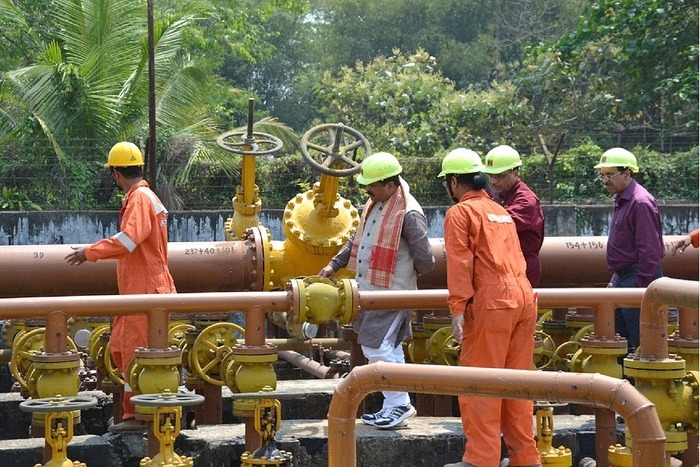India’s largest explorer Oil and Natural Gas Corporation (ONGC) is seeking to diversify its business to trading liquified natural gas and growing its renewable capacity in order to shield its core business from volatile oil prices, reported the ET quoting Arunangshu Sarkar, director for strategy at the state-run giant.
According to the International Energy Agency, the world is entering an era of cheaper energy prices, with growing electricity use leading to a surplus of oil and gas. ONGC is among the several oil majors looking to diversify their business strategies as the global economy moves away from fossil fuels. “Globally, we are heading to a glut in oil supplies which means prices will reduce,” Sarkar said in an interview.
Centre gears up to supply 906 million tonnes of coal to power sector in 2025-26
The Ministry of Coal’s domestic coal supply will be 906.1 million tonnes (MT) for FY 2025-26, to meet the Ministry of Power requirement for the financial year 2025-26, the Parliament was informed on Monday.
There is adequate availability of coal in the country at present, the ET reported, adding that as per the Central Electricity Authority (CEA), the coal stock at domestic coal-based power plants stands at 53.49 million tonne (MT) as on March 10, 2025, in comparison to 44.51 MT on the corresponding day of the last year 2023-24 with a growth rate of 20.20 per cent. The current coal stock is sufficient for about 20 days at 85 percent plant load factor (PLF), Union Minister of Coal and Mines G. Kishan Reddy told the Rajya Sabha in a written reply.
India mulls scrapping import tax on US LNG, boost purchases, sources say
India is considering a proposal to scrap import tax on U.S. liquefied natural gas (LNG), Reuters reported quoting four government and industry sources. The United States is India’s second biggest supplier. India pledged to increase U.S. energy purchases by $10 billion to $25 billion in the near future, while both countries agreed to target $500 billion in bilateral trade by 2030.India currently imposes a 2.5% basic customs duty and an additional 0.25% social welfare tax on LNG. Report said China’s 15% import tax imposed last month on LNG imports from the U.S. could divert trade of the super-chilled fuel to India, where the International Energy Agency expects a 60% jump in gas use between 2023 and 2030, with imports of LNG doubling over that period.India can also raise U.S. imports of petrochemicals, ethane, propane and butane, the source said.
Oil executives bluntly criticize Trump tariffs and ‘drill, baby, drill’
Oil executives are warning that Trump’s tariffs and his “drill, baby, drill” message are disrupting energy markets, which “is already affecting investment”, according to an anonymous survey conducted by the Federal Reserve Bank of Dallas, reported CNBC.
Bloomberg said the survey is “full of anonymous energy executives complaining about how the new Trump administration is creating massive uncertainty for their business”. Reuters also covered the story and highlighted that US oil producers are also “grappling with geological limits to production growth”, as the Permian basin – the nation’s top oilfield – nears peak output.
US: Trump to impose tariffs against countries that buy Venezuelan oil
Donald Trump issued an executive order that could impose tariffs of 25% on all goods imported into the US from any country that imports Venezuelan oil, reported the NYT. On or after 2 April, a tariff of 25% may be imposed on all goods imported into the United States from any country that imports Venezuelan oil, either directly or indirectly through third parties, the order said.
China discovers major oilfield in South China Sea
The China National Offshore Oil Corporation (CNOOC) announced that it has discovered a “major oilfield in the eastern South China Sea, with proven reserves exceeding 100 million tonnes”, reported Xinhua and Reuters. Xinua said the Huizhou 19-6 oilfield marks a breakthrough in China’s offshore oil exploration, as it is the country’s first large-scale integrated clastic oilfield discovered in deep to ultra-deep layers, CNOOC said. Situated about 170km from Shenzhen in south China’s Guangdong Province, the oilfield sits at an average water depth of 100 metres. Test drilling has yielded a daily production of 413 barrels of crude oil and 68,000 cubic metres of natural gas, demonstrating its potential. Reuters reported that the field is “not in a disputed part of the South China Sea and lies within China’s Exclusive Economic Zone, which runs for 200 nautical miles or 370km from its coast.
About The Author
You may also like
Lula Pitches Fossil Fuel Phase-Out at COP30, But Can a Divided World Agree?
Fossil Fuels CO2 Emissions Hit Record in 2025 as Global Carbon Budget Nears Exhaustion
OPEC Predicts 2026 Supply-Demand Balance, Leading to Another Drop in Oil Prices
Rising Global Energy Demand Fuel Security Threats: WEO Report
Brazilian President Calls For Fossil Fuel Phase Out, launches Biofuel Push at COP30

